

Getting Acquainted with the MAX
This chapter covers these topics:
What is the MAX?
The MAX is a WAN access router designed for central site remote access applications. It has these main features:
What items are included in your package?
The MAX package contents vary, depending on the base unit and expansion cards you order. This section helps you confirm the items in your package. Checking the MAX base unit
Open the shipping package and make sure you have received the base MAX unit that you ordered. Figure 1-1 displays the AC MAX base unit, Figure 1-2 displays the AC Redundant MAX base unit and Figure 1-3 displays the DC MAX base unit (with a DC power source).
Figure 1-2. Redundant MAX base unit
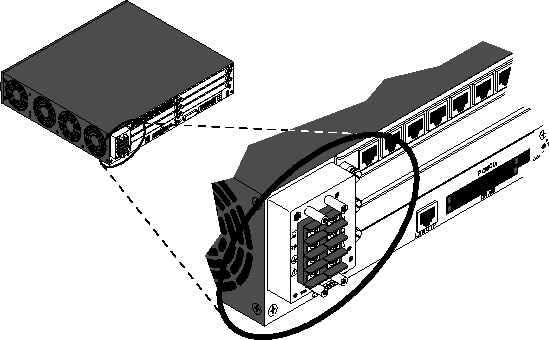
Figure 1-3. DC power source on the MAX 6000 and the Redundant MAX 6000
Checking other package contents
After you verify that you have received the right base unit, make sure your package contains these items:
Figure 1-4. Digital modem card
Host/6 card
The Host/6 card, also known as the AIM/6 card, supports up to 32 online channels. You can install a maximum of two Host/6 cards in the MAX. See Figure 1-5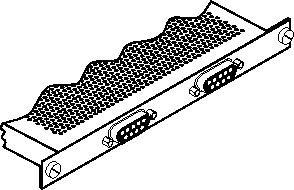 .
.
Figure 1-5. Host/6 card
ISDN BRI Network interface and terminal interface cards
The ISDN BRI network interface card and ISDN terminal interface cards have eight ISDN BRI ports. You can install a maximum of four ISDN BRI network interface cards in the MAX. See Figure 1-6.
Figure 1-6. ISDN BRI network interface or terminal interface cards
Multiband inverse multiplexing card
The Multiband inverse multiplexing card has two or six user-selectable RS-449, V.35, or X.21 serial host ports with inverse multiplexing and RS-366 capability, V.25bis, or control-lead signaling. Figure 1-7 shows the two-port card.
Figure 1-7. Multiband inverse multiplexing two-port card
Series56 digital modem card
The Series56 digital modem card provides eight, twelve, or sixteen digital modems per card. You can install a maximum of 72 digital modems in the MAX. See Figure 1-8.
Figure 1-8. Series56 Digital modem card
V.110 card
The V.110 card provides up to eight V.110 WAN sessions. You can install a maximum of six V.110 cards in the MAX. See Figure 1-9.
Figure 1-9. V.110 card
PIFSA-16 card
The PIFSA-16 card provides up to 16 PIFSA WAN sessions. You can install a maximum of six PIFSA-16 cards in the MAX.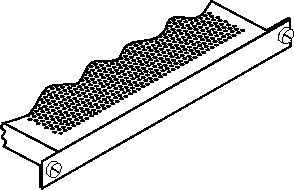
Figure 1-10. PIFSA card
IDSL card
Ascend's ISDN Digital Subscriber Line (IDSL) card (displayed as BRI/LT in the vt100 menu screen) supports incoming and outgoing voice calls. To support outgoing voice calls, the connected TE (Terminal Equipment) must send digits to the MAX using Q.931 en-bloc dialing (sends all dialed digits to the MAX in one block (the ISDN Call Setup message) rather than one digit at a time).
Figure 1-11. IDSL card
DRAM card
This is a proprietary Ascend card. It is not hot-swappable and should not be removed while the MAX is running. The DRAM card attaches directly to the CPU bus and damage might occur if you attempt to remove it.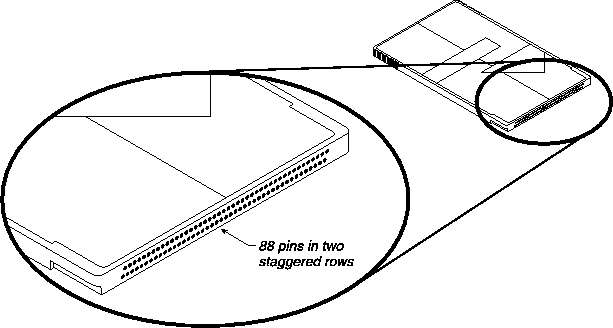
Figure 1-12. DRAM card
PCMCIA flash card
This is a standard card that extends existing flash memory. 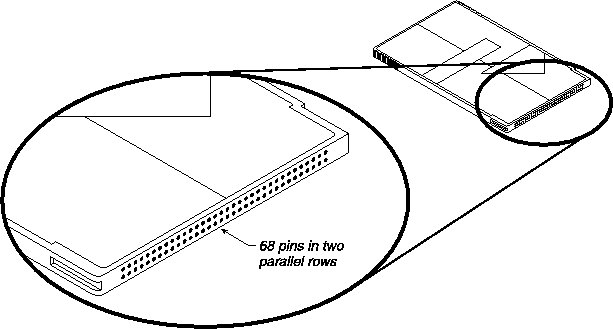
Interfaces
Read this section to learn the names and descriptions of the types of physical interfaces on the MAX. Interfaces on the base unit
Figure 1-1 on page 1-2 and Figure 1-2 on page 1-2 show the physical interfaces on the MAX base unit.
POWER
The power interface on the MAX accepts AC or DC power depending on the model you purchased. Figure 1-1 on page 1-2 and Figure 1-2 on page 1-2 show AC power sockets. Figure 1-3 on page 1-2 shows the DC power socket. See Appendix B, "MAX Technical Specifications " for further details.
CONTROL
The Control port connects to a VT-100 terminal or modem to access and provides the menu-driven user interface to the MAX. It runs at 9600 bit/s (configurable through the user interface), 8 bits per character, no parity, no flow control, 1 stop bit. See Appendix C, "Cables and Connectors, "section User interface specifications for details on cables that connect to this port.
LAN UTP
The LAN UTP port connects the MAX to a UTP (unshielded twisted pair 10/100 BaseT) LAN. See Appendix C, "Cables and Connectors, "section Ethernet interface specifications for details on cables that connect to this port.
PCMCIA
The PCMCIA interface accepts a plug-in PCMCIA card. See Figure 1-13 on page 1-7.
DRAM
The DRAM interface accepts a plug-in DRAM card. See Figure 1-12 on page 1-6.
SERIAL V.35 DTE Port
The Serial V.35 DTE port provides a point-to-point connection between the MAX and another device. This port is called the Serial WAN port in these manuals. See Appendix C, "Cables and Connectors, "section Serial WAN cabling specificationsfor details on cables that connect to this port.
WAN (1 to 4)
The WAN ports are either a group of four T1 or four E1 ports providing point-to-point T1/E1 connections between the MAX and other devices. These ports are called Net/T1 and Net/E1 ports in these manuals. See Appendix C, "Cables and Connectors, "sections T1/PRI interface specificationsand E1/PRI interface specificationsfor details on cables that connect to these ports.
ALARM
The Alarm interface is a two-connector terminal block that provides indication of alarm conditions. See Appendix B, "MAX Technical Specifications " for further information on the alarm relay.
Interfaces on expansion cards
AIM/BONDING
The DCE interfaces in Figure 1-5 on page 1-4 and Figure 1-7 on page 1-4 provide AIM/BONDING inverse multiplexing services to devices connected to them. See Appendix C, "Cables and Connectors, " section Serial host interface specificationsfor details on cables that connect to these ports.
PALMTOP
A port that connects to a hand-held palmtop control terminal, although it can also connect to a VT-100 terminal. (See Figure 1-7 on page 1-4.) The Palmtop port provides access to the menu-driven user interface of the MAX. It runs at 9600 bit/s (configurable through the user interface), 8 bits per character, no parity, no flow control, 1 stop bit. See Appendix C, "Cables and Connectors, " section User interface specificationsfor details on cables that connect to these ports.
ISDN BRI
ISDN BRI ports are either a group of eight DTE or eight DCE ports providing point-to-point ISDN BRI connections between the MAX and other devices. (See Figure 1-6 on page 1-4.) These ports are called the Net/BRI and Host/BRI ports in these manuals for the DTE and DCE interfaces, respectively. From the point of view of the MAX pins 3 and 6 transmit on the Net/BRI interface while they receive on the Host/BRI interface. Pins 4 and 5 receive on the Net/BRI interface and transmit on the Host/BRI interface. See Appendix C, "Cables and Connectors, " section ISDN BRI interface specificationsfor details on cables that connect to these ports.
IDSL
The IDSL ports are a group of eight DCE ports providing point-to-point IDSL connections between the MAX and other devices. (See Figure 1-11 on page 1-6.) An IDSL port has the same pinouts as a Host/BRI port. See Appendix C, "Cables and Connectors, " section IDSL specificationsfor further information.
Copyright © 1998, Ascend Communications, Inc. All rights reserved.